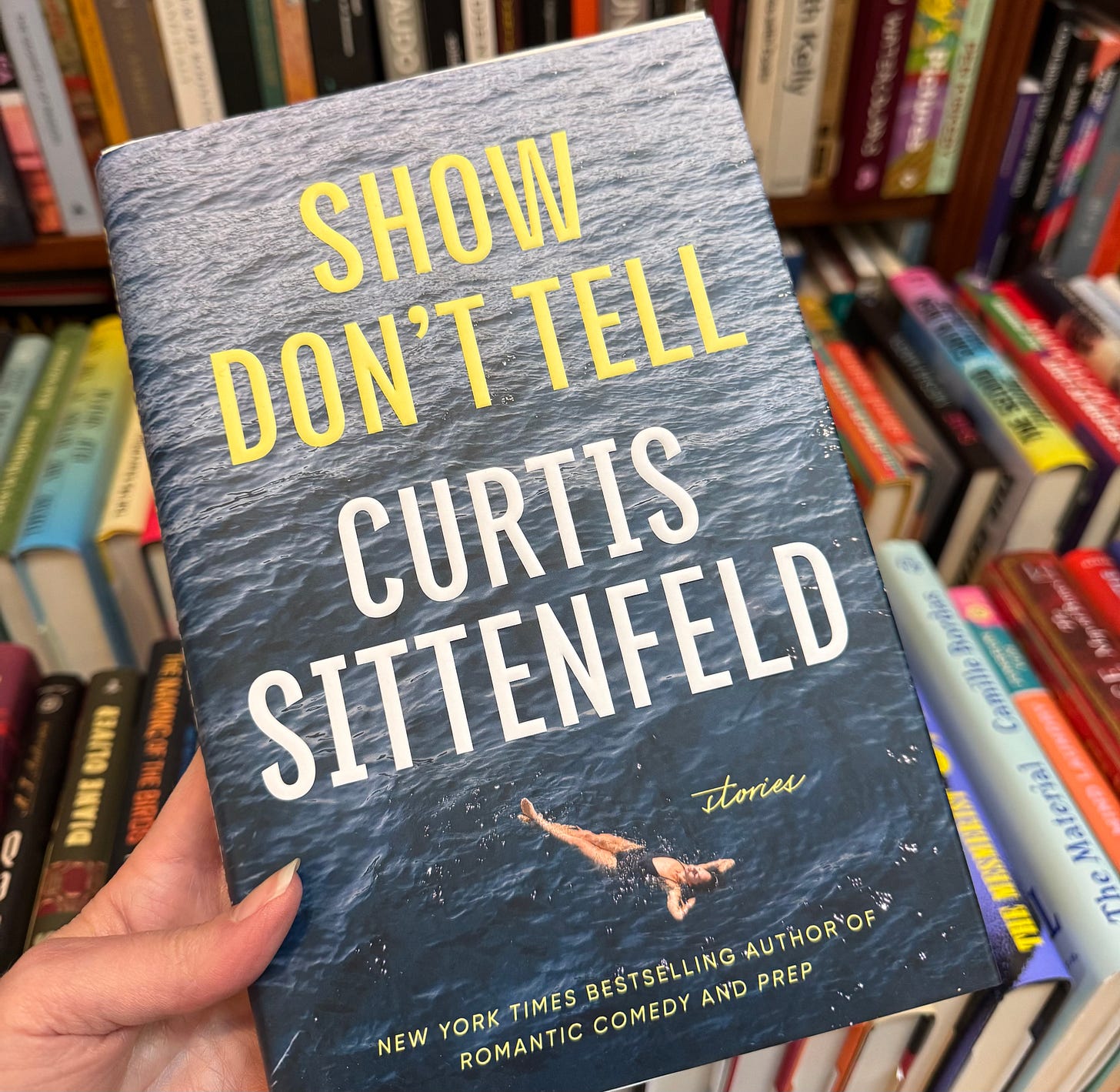Tell Don't Show
I like short stories now
I had seen Show Don’t Tell on bookshelves for a few weeks, and had been tempted to buy it given that I’ve devoured everything else Curtis Sittenfeld has written (or so I thought—more on this below). The only thing holding me back was that it was a collection of short stories, rather than a novel. This felt unsatisfying to me for some reason, a reason I can no longer recall now that I have read the whole beautiful collection and can’t believe I almost passed it up.
Which brings me to mistakenly thinking I had read everything Sittenfeld has ever written. Am I the only one who, after finishing a book she adores, reads every word of the acknowledgements, front cover, back cover, inside flaps—everything one can find so that the book isn’t really over yet? It was in the process of doing this that I realized I had missed out on an earlier collection of short stories by Sittenfeld, one called You Think It, I’ll Say It. Suffice it to say, that title immediately went on my list to pick up at the local bookstore as part of my next regular (nearly weekly) haul.
After finally scooping it up during Charlottesville’s Festival of the Book in late March, I read Show Don’t Tell while on a short vacation with my husband. He had found himself in a particularly busy stretch with work, so every day I would read the book on the beach or at the Airbnb while he was working, and we would meet up for happy hour and I would tell him about that day’s stories. My husband is a good sport and always lets me recount the plot of whatever book I’m reading to him in great detail (a couple of summers ago, we were at the pool together while I was reading Romantic Comedy and I kept putting it down to shriek “ugh it is soooo good!” and to subsequently regale him with whatever the characters were doing in that very moment).
While reading Show Don’t Tell on the Georgia coast, two things in particular felt ultra-satisfying about sharing the stories with my partner over margaritas: 1) I could summarize an entire story relatively quickly and we could then discuss it at length, versus sharing what’s happening in a novel at that precise moment in time and then picking the thread back up the next day; and 2) every single one of these stories is, to me, so relatable and thought-provoking that they practically begged me to discuss them with someone. I know I am lucky to have a husband who has a particularly high tolerance for “rom com” talk (quite literally, when I was reading Romantic Comedy, but also, on one of our earliest dates I was stunned to hear him quote the most obscure lines from You’ve Got Mail). But the stories in Show Don’t Tell are so universal that they do not fall into that category, the category that might otherwise bore a non-rom com reader. It’s almost as if women’s fiction is just….fiction.
Someone recently asked me what it is I like about “reviewing” books (heavy quotation marks here because that is hardly what this is). My answer was immediate and from the heart: the only thing I love more than reading is sharing what I’ve read with others, and hearing from others what they have read and loved (or not). Recommending books to friends and receiving reading recommendations in kind….in some ways I can feel more connected to a person knowing that we both loved the same book than I would if we had had a conversation around the same issues that the book discusses. I crave human connection as much as I enjoy my solitude, and in this way reading is the perfect bridge between the two.
Having said that, I don’t want to spoil anything in the collection for those who haven’t read it. I will just say that if you like stories about the lived experience—anything from friendship to politics to love to failure to class dynamics to regret to joy and everything in-between—you will love reading Show Don’t Tell. And if you’re anything like me, it will leave you wanting to tell (not show) a special someone all about it.


I love Curtis Sittenfeld too but have never read the short story books for some reason too! I am adding to my list now!